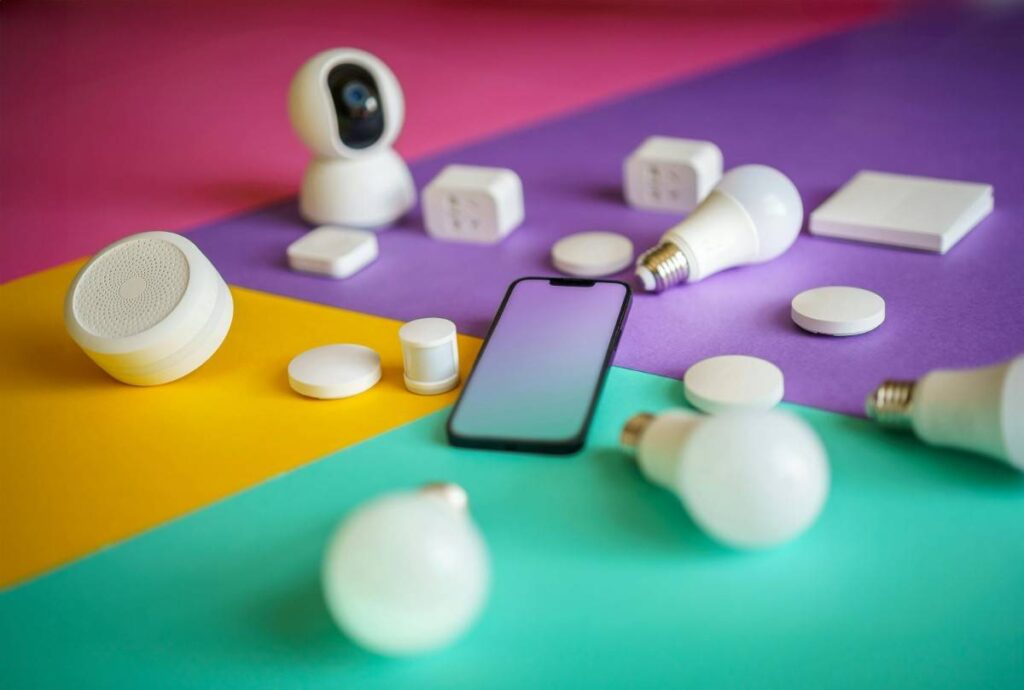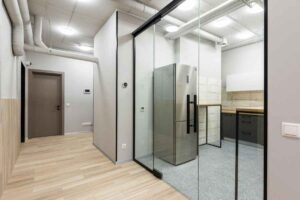
“Enhancing Efficiency with Smart Home Productivity Integration Tools”
The revolution brought about by smart homes is that we don’t think about life at all. But imagine that, now, combined with tools built to maximize productivity. No longer does integrating productivity tools into smart home devices seem like a far-off idea — it’s becoming a reality as products are shaping workspaces in the United States.
And whether you’re at home in your PJ’s, residents, working from home, or keeping house and taking care of your family, smart home productivity integration tools can help you save time and be more efficient. This entire guide offers you a look into the benefits, devices, things to do and tips to be productive in your smart home situation.
But why combine Smart Home Devices with Productivity Tools?
By coupling productivity tools to smart home devices, we gain ease of convenience and efficiency in a seamless mix. Here’s why this combination works so well:
Automates Repetitive Tasks: Auto the mundane tasks…turning off lights, reminders, etc. so you’ll focus more on critical ones.
Improves Time Management: Productivity apps with smart devices synchronize through real time updates on schedules and tasks.
Enhances Focus: Noise canceling smart speakers, for example, along with tools, allow us to create environments to work deeply.
1. Voice Assistants: Smart Productivity: Heart of the thing
These voice assistants from Amazon Alexa, Google Assistant, and Apple Siri are becoming indispensably tools to integrate smart home devices with productivity platforms.
Key Functions:
Remind you when you set alarms and timers are easy.
Get verbal notifications about upcoming meetings or deadlines via sync to calendars.
Link with tasks apps like Trello, Todoist.
### Related Topics
– Web Development : Frontend Development
– Popular : Productivity
Example in Action: “What’s on my agenda today: Hey Google?” This one simple command just pulls up your schedule and keeps you in the know.
2. Visual task management through Smart Displays
If you’re a visual learner, smart displays like Google Nest Hub or Amazon Echo Show, could be huge gamechangers.
How They Help:
Display today’s schedules, to do lists or project timelines at a glance.
Get news and weather, and display reminders for a time overview of your day.
Work with the other apps like Asan for project manegement.
3. Optimization of Focus with Smart Lighting
We know it’s been proven that lighting impacts our mood and productivity more than we think. When smart lighting solutions such as Philips Hue and LIFX enable you to control brightness and color temperature according to your work hours, it’s amazing.
Productivity Boosters:
Cool, bright tones for doing tasks, both focused (writing) and unfocused (coding).
Brainstorming friendly or quiet settings to ease off of work.
Set schedule lights to adapt to your schedule automatically.
4. Comfortable and Energy Saving Smart Thermostats
The productivity depends on temperature. Nest Thermostat and Ecobee keep your environment at the most comfortable levels possible.
Features:
Automatically adjust the temperatures to what you prefer.
Minimize energy through using eco-modes during non working hours.
Voice controlled by smartphone apps.
Having a comfy workspace takes out all the distractions and lets you concentrate more on what really matters.
5. Smart Audio Systems that Reduce Noise
If you’re sharing or living in an open space, it’s vitally important to be able to manage background noise. Controlled soundscapes helped by Smart audio systems enhance productivity.
Examples:
Bose Smart Speaker: Brings hand gesture + voice assistant + high quality audio together.
White Noise Machines: Deep work or better sleep prevent block distractions.
Smart soundbars: Distract yourself with noise reduction video calls.
6. More about task integration through smart hubs
Amazon Echo or Google Home constitutes the smart hub from which your devices are controlled. However, when integrated with task management tools, they also double as user productivity hubs.
How They Work:
It can connect with apps like Evernote, for example, to make adding and retrieving notes as easy as it could possibly be.
IFTTT (If This Then That) gives us the ability to automate workflows to trigger actions on our devices.
For example, you can create a routine that will automatically turn on your smart lights and show you your to do list when you say, “Start my workday”.
7. Perfect Coffee Makers for Timing
A hot cup of coffee, at just the right time, can be the thing to get you started in the morning or help you make it through an afternoon slump. Nespresso Expert or Keurig K-Supreme Smart allows for this.
Integration Perks:
Apps allow schedule brewing times.
It also allows you to prepare coffee without getting out of your desk using voice commands.
Control both the brew strength and size remotely.
8. It Just Works: Security and Productivity Go Hand in Hand.
Smart cameras, doorbells like Ring and Arlo, as well as security devices, give you peace of mind while you’re working.
How They Help:
You can keep watch on deliveries or visitors, while staying in your workspace.
Receive real time alerts on your phone for any undesirable activity.
This is integrated with hubs for voice controlled surveillance.
Knowing your house is safe allows you to concentrate on the job that is to be done without interruptions.
9. Flexible Workspaces’ Smart Furniture
Now furniture is going high tech. Smart desks and chairs come with features geared to make your working environment more productive.
Examples:
Memory enabled standing desks that allow you to instantly stand or sit with one click.
Posture correct chairs with fatique alerts.
These options are a blend of functionality and comfort allowing your workspace to be more adaptable and productive.
10. Natural Light Control Smart Curtain Systems
Natural light can actually be regulated to improve focus, and of course mood. Then you’ve got automated curtains or blinds like Somfy or Ikea’s FYRTUR that work all day long to adjust for you.
Benefits:
Admitted of sunlight during peak productivity hours.
Make sure screens on video calls are as free of glare as possible.
Seamlessly integrate with your lighting system, or with the world of lights you already have within it.
How to set up your smart productivity ecosystem
Planning is needed for a productive smart home creation. Here’s how to get started:
Choose a Hub: Make sure there is seamless integration with a platform (Google Home, Alexa or Apple HomeKit).
Identify Key Areas: First focus on lighting, temperature and task under light loads.
Automate Routines: You can stream line workflows with triggers such as voice commands or app based schedules.
Expand Gradually: Choose the minimum devices that you need first, then grow into new devices as you get more complex.
“Maximizing Efficiency with Smart Home Productivity Integration Tools”
Imagine this: You say “Start my day” and your home come to life; lights adjusting, your coffee gets brewed and your schedule is displayed to you. All you have to do is go to work and star at your tasks. Don’t ask your smart assistant to do your emails… yet. The future of productivity is not just efficient, it’s effortless. With smart home productivity integration tools in play, we can instantaneously automate tasks such as mundane customer service or monitoring your target’s behaviours on social media.
FAQs About Smart Home Productivity Integration Tools
1. What do smart home devices do for productivity?
They automate, remind, and create the best possible environment for focus, which all contributes to more efficient management of your day.
2. Am I able to set up my smart home devices without having a hub?
Although many things like smart lights or thermostats, connect over Wi-Fi or Bluetooth, the actual box is wired. Indeed, but a hub cocoons coordination better.
3. Which smart home devices work best with the productivity apps that suit them best?
There are apps like Todoist, Google Calendar, Trello and Evernote that smoothly work with the like Amazon Echo or Google Nest devices.
4. Are smart home devices even worth investing a lot of money into?
Absolutely. Valuable for productivity based people as they save time, reduce energy cost, streamline workflow.
5. Are smart home devices safe?
There are plenty of devices providing robust security options. Always use strong passwords, use two factor authentication and update the firmware often.
6. How do you get the simplest introduction of integrating productivity tools with smart devices?
A good way to start would be to use a voice assistant like Alexa or a Google Assistant and pair it up with a task management app as well as smart lighting.



